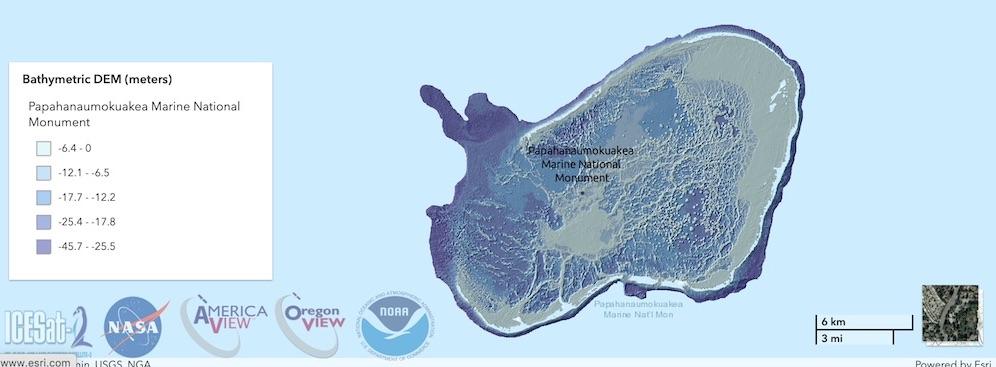Last month NASA mission scientists began to map the shallow sea floors around the world’s coastlines. The NASA’s ICESat-2 satellite’s green laser beam, penetrating up to 40 meters into the ocean, will generate bathymetric data that could be game changing, especially for mapping coral reefs and monitoring their health, says Greg Asner, an ecologist at Arizona State University, Tempe.
The laser ICESat-2’s engineers knew its green laser would delve deeper into the ocean than the infrared beam of its predecessor, ICESat. But they expected it to penetrate only 1 or 2 meters—not worth planning for. Then data started to come in that revealed far deeper reefs—not just near Bikini but also in St. Thomas and the Bahamas, describing ICESat-2 as an accidental bathometer,
Rising ocean temperatures are killing off corals worldwide, so identifying resilient species is important. Yet mapping them, from space or by drone or airplane, is expensive and challenging. “We don’t know the geography of the living parts of coral reefs today, and we’re unable to keep up,” Asner says.

Asner and his colleagues are analyzing millions of images from satellite company Planet, looking for the green light reflecting off underwater objects. But different viewing angles and light conditions make it hard to compare images, and they struggle to capture underwater features deeper than 10 meters. “It’s nice to know we can turn to ICESat-2 and use it for calibrating our work.”
On its own, ICESat-2 will be able to say much about reefs. It could reveal a reef’s slope and depth, indicators of the habitat it provides, and knobby textures that signal a more complex reef, with many intertwining coral species. Long term, ICESat-2 could measure which reefs are growing or receding, perhaps a sign that their corals have died. “You can compare the health of reefs across the globe,” says Jenn Dijkstra, a marine ecologist at the University of New Hampshire, Durham. [ScienceMag]



